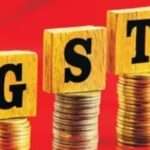Introduction of Futures and Options Trading
Futures and Options Trading, a fresh analysis by the Securities and Exchange Board of India (SEBI) unveils an unsettling scenario for retail participants delving into the labyrinth of futures and options (F&O) trading. The analysis shows that over 93% of retail traders have lost money in F&O in the last three years, with total losses between FY22 and FY24 exceeding Rs 1.8 trillion. Despite these staggering losses, 75% of traders continued to trade, underlining a behavioural pattern that has raised concerns about the need for better regulatory oversight and financial education.
In this article, we discuss SEBI’s findings in depth, exploring trends, risks, and future outlook for retail traders. With rising retail investor participation, especially beyond the top 30 cities, this report has become a key driver of policy changes aimed at protecting individual investors from further financial distress.

Futures And Options Trading:
Futures and Options (F&O) are financial derivatives that provide traders with the ability to buy or sell assets at predetermined prices on a future date. While F&O trading offers opportunities for hedging and speculative gains, it carries significant risks due to leverage – where small price movements can lead to large profits or losses.
Retail traders, often driven by the allure of quick gains, have flocked to Futures and Options (F&O trading), leading to a dramatic increase in daily turnover. However, many lack the sophisticated strategies employed by institutional and algorithmic traders, making them more vulnerable to significant losses.
SEBI Findings: An In-Depth Analysis
SEBI’s analysis showed that the proportion of loss-making retail traders in the F&O segment has increased from 89% in FY22 to 91.1% in FY24. The average retail trader in this group has lost Rs 2 lakh over a three-year period. These losses are more pronounced among traders with lower annual incomes, many of whom have continued to trade despite facing significant financial setbacks.
The report also highlights disproportionate profit-making among foreign portfolio investors (FPIs) and proprietary traders, who have leveraged advanced technologies and trading algorithms to dominate the market. In contrast, 99.8% of individual traders, who contributed only 30% of total turnover in FY24, have struggled to keep pace.
Rise in retail participation
The number of retail traders has nearly doubled from 5.1 million in FY22 to 9.6 million in FY24. Several factors have fueled this growth, including the growing accessibility of online trading platforms, the influence of social media, and the promise of high returns attracting new and inexperienced traders to the market.
This surge in retail participation has fuelled a debate about the suitability of F&O products for individual traders, with calls for stricter regulations to protect these investors from suffering further losses.
Losses incurred: Key data points
The SEBI report gives a detailed breakdown of the losses incurred by retail traders between FY22 and FY24:
The total losses exceeded Rs 1.8 trillion, with individual traders suffering a net loss of Rs 75,000 crore in FY24 alone.
The top 3.5% of losers (around 400,000 traders) incurred an average loss of Rs 28 lakh per individual.
Only 7.2% of individual traders made a profit, of which less than 1% made a profit of more than Rs 1 lakh after taking into account transaction costs.
These figures underscore the high-risk nature of F&O trading for individual investors, who often lack the tools and expertise to understand the complexities of the market.
The Psychology Behind Continuous Trading
One of the most puzzling findings in the report is that 75% of retail traders continued to trade despite consecutive losses. This behavior pattern can be attributed to several psychological factors, including loss aversion, where traders are reluctant to exit a losing position, and the gambler’s fallacy, which leads individuals to believe that a winning streak is just around the corner.
In addition, the fear of missing out on potential future gains (FOMO) drives many traders to participate despite overwhelming evidence of consistent losses.
The Impact of Algo Trading on Retail Investors
Algorithmic trading, or algo trading, has become a dominant force in the F&O markets. These automated systems, capable of executing large volumes of trades at high speed, contribute to the growing disparity between retail and institutional investors.
According to a SEBI report, 97% of FPI profits and 96% of proprietary trader profits in FY24 were generated by algo trading strategies. Retail traders, who typically do not have access to these sophisticated tools, find themselves at a significant disadvantage.
Institutional vs. Retail Traders
The performance gap between retail and institutional traders has widened significantly. FPIs and proprietary traders recorded gross trading profits of Rs 28,000 crore and Rs 33,000 crore, respectively, in FY24, while retail traders suffered huge losses.
This imbalance has given rise to discussions on the need for regulatory intervention to level the playing field and protect individual investors from being consistently outperformed by larger, more sophisticated market participants.
Geographic and demographic shifts in trading
SEBI data reveals significant geographic and demographic shifts among retail traders. Nearly three-quarters of traders in FY24 were from outside the top 30 cities, representing a higher proportion than mutual fund investors.
Additionally, there has been a significant increase in younger traders, with the proportion of traders below the age of 30 increasing from 31% in FY23 to 43% in FY24. These changes reflect the broader trend of democratisation of the retail market, but they also highlight the need for better financial literacy and risk management among new and inexperienced traders.
Impact of income on trading losses
The report pointed out that over 75% of retail traders had declared an annual income of less than Rs 5 lakh. This suggests that many individual traders are possibly over-leveraged, thereby exposing themselves to significant financial risks, which could have a long-term impact on their personal finances.
Traders in these income groups are more vulnerable to higher losses as they have less financial cushion to absorb the impact of failed trades, emphasising the need for better safeguards and financial support mechanisms.
SEBI’s proposed measures to curb losses
In view of growing concerns about retail trading losses, SEBI has proposed seven key measures aimed at curbing speculative retail participation in the F&O market. These measures include:
Stricter eligibility criteria for retail traders participating in the F&O markets.
Introduction of risk disclosure statements to inform traders about potential financial risks.
Mandatory risk management training for new participants.
Limiting leverage to reduce the risk of individual traders.
Introduction of circuit breakers to halt trading during periods of extreme market volatility.
Stricter algorithmic trading regulation to prevent unfair advantages.
Increased monitoring over foreign algo traders.
If these measures are approved, speculative retail activity is expected to reduce significantly, ensuring that only traders with adequate risk tolerance and knowledge remain active in the market.
Role of financial education in risk mitigation
A key theme of the SEBI report is the urgent need to enhance financial education and investor awareness programmes. Many retail traders enter the F&O markets with limited understanding of the risks involved, leading to uninformed decisions, resulting in significant losses.
Educational initiatives can equip traders with the knowledge to develop better risk management strategies and avoid costly mistakes, ultimately reducing the overall incidence.
ZERODHA 1) : https://zerodha.com/open-account?c=EJ4366
Angelone 2) : https://tinyurl.com/2gloc3g6 or
Upstox3): https://link.upstox.com/9w4tNo1rK8au7VK47










I’m often to blogging and i really appreciate your content. The article has actually peaks my interest. I’m going to bookmark your web site and maintain checking for brand spanking new information.